When we work with CEOs, CTOs, and CIOs, we frequently get asked these questions:
- Is moving to the cloud cheaper?- Are there real cost savings (of moving to the cloud)?
- Can I eliminate headcount (if we move to the cloud)?
Moving to the cloud is not a simple ‘cost’ decision for a software maker or software buyer. Moving to the cloud is a very different set of cash flows and risk transfers. Moving to the cloud provides optionality for both the software maker and buyer.
Optionality provider faster Time to Market (TTM) for new products or services. Faster TTM is critical for rapid growth in good times and staying in business in bad times. In this post, we’ll explain the how much faster TTM can be for delivering new software and functionality.
The shift to Cloud software is like the early days of companies using electricity. Early adopters of electricity generated their own power with generators in their buildings. This required a large investment in capital to:
- buy and maintain generators,
- hire new specialists to keep the power flowing,
- hire new safety specialists,
- and a general difficulty in increasing capacity
As the electricity market matured, power plants supplied companies with electricity as a service. This eliminated the fixed costs and risks of fluctuating power supply and demand. The shift to the Cloud is very similar with respect to cash flows, internal vs. external expertise, and shifting risk.
In the history of Information Technology, the Cloud is one of the major waves of disruptive technology of the last decade. It is as substantial as the introduction of the personal computer in the 1980s and led to the proliferation of mobile devices. Mobile devices, while powerful devices on their own, are most useful when connected to cloud-based services. The image below shows some of the major disruptive waves of Information Technology dating back to the 1970s.
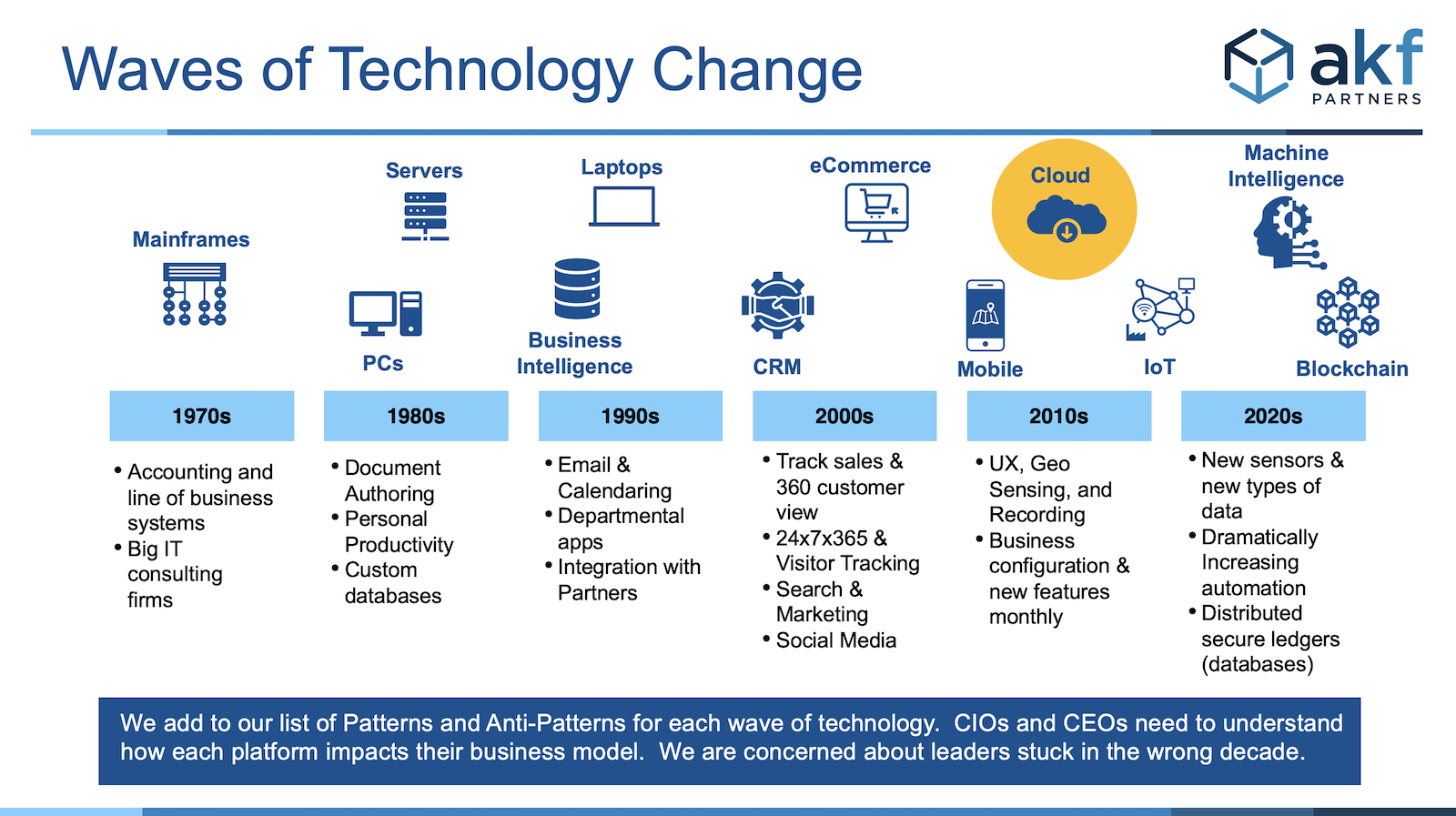
To better understand the TTM advantage of the Cloud, we’ll compare Cloud software to on-premises software. We’ll look at both the maker of the software and the corporate customer of the software.
Historically, software makers released new versions of their products on multi-year release cycles. A typical release cycle is 3-4 years (see below). Microsoft followed a similar model for many years.

On-premises software could be installed at several hundred or thousand different data centers. This leads to different versions and increasing complexity. Let’s look at the typical milestones that occur for a release of software in the following graphic:
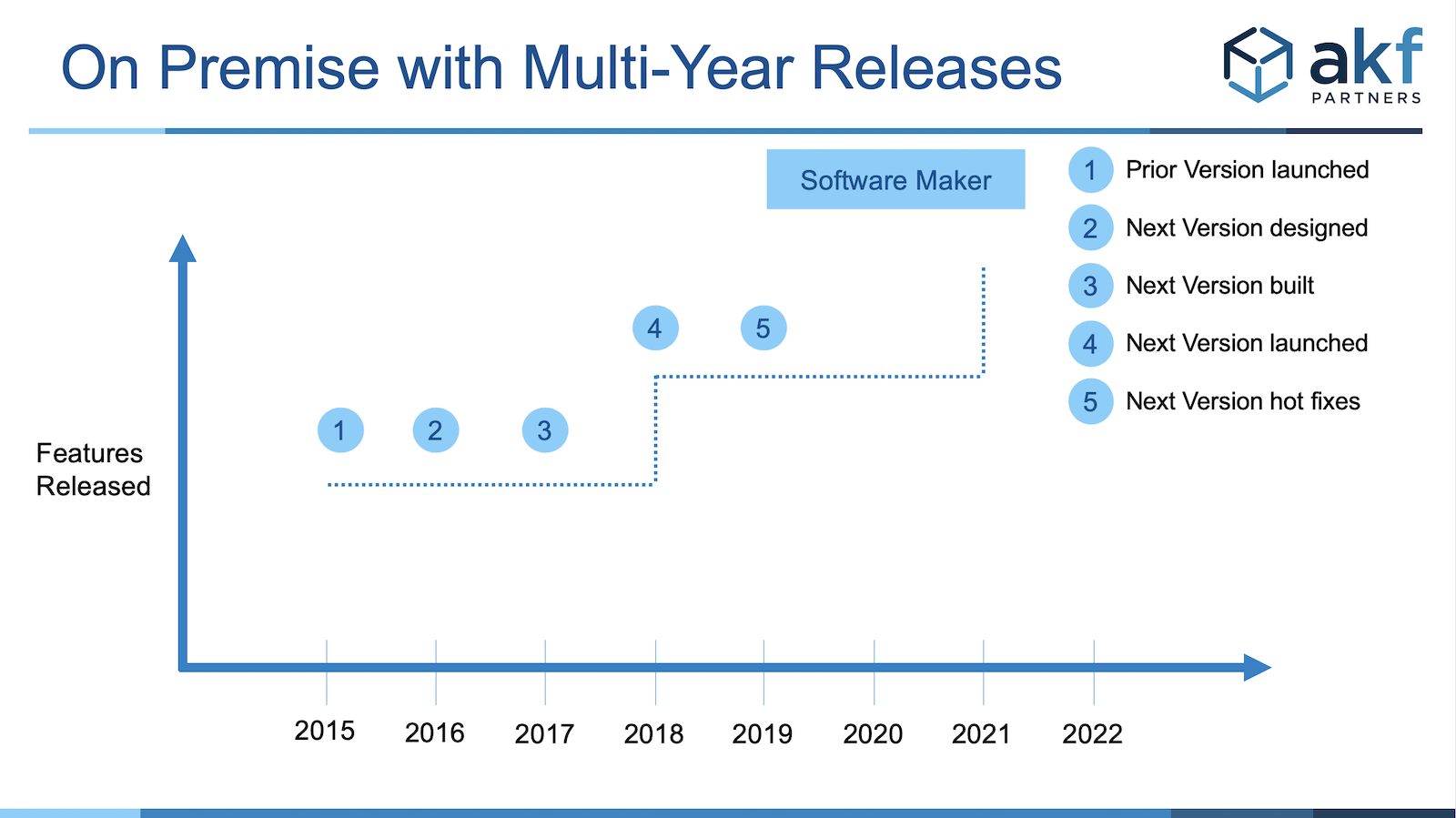
In the example above, a software maker releases a version in early 2015. Then the product team immediately starts development on the next version. The high level design and set of features are usually well defined in a year. The product team builds the new version over the next year. The last year of the release cycle consists of internal testing, early customer testing, marketing activities, and customer support readiness.
However, when the next version is finally released, few customers immediately upgrade. Why is that? It is because the majority of customers are waiting for the first set of hot fixes. To understand why the majority of customers wait for hot fixes, let’s look at milestones from the customer’s perspective.
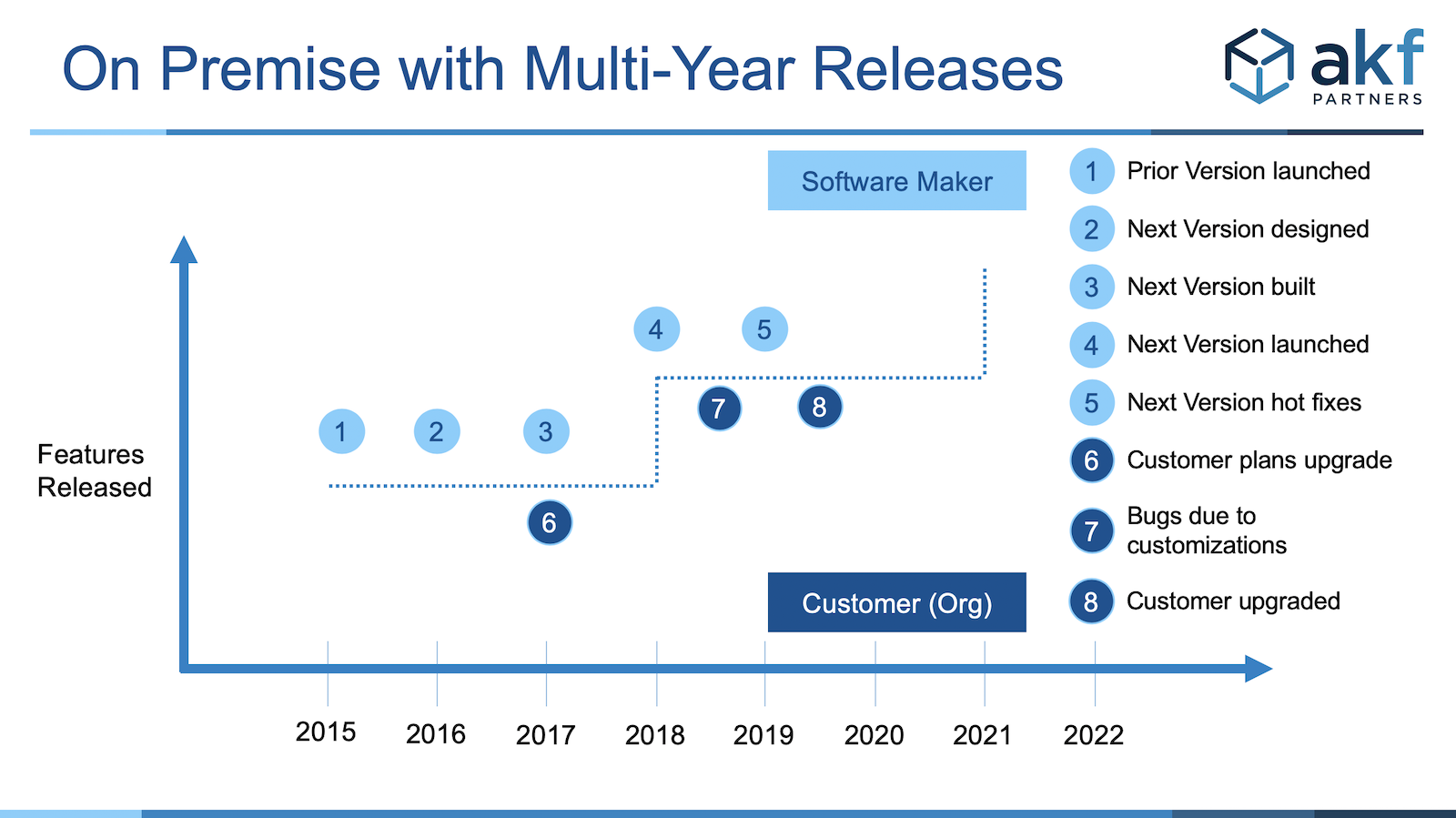
The majority of existing customers are planning about 1 year ahead for new releases of software. With a long release cycle, many customers make customizations, extensions, or integrations. Customizations occur because the software is lacking features that the customer wants or needs.
With thousands of customers making unique changes, the software maker cannot expect or see all possible modifications. As a result, the software maker releases hot fixes several months after the new launch. Customers are then able to test the new software and safely release it in their environment. This long sequence leads to an important business risk for both the software maker and the software buyer. The majority of new features are several years old!
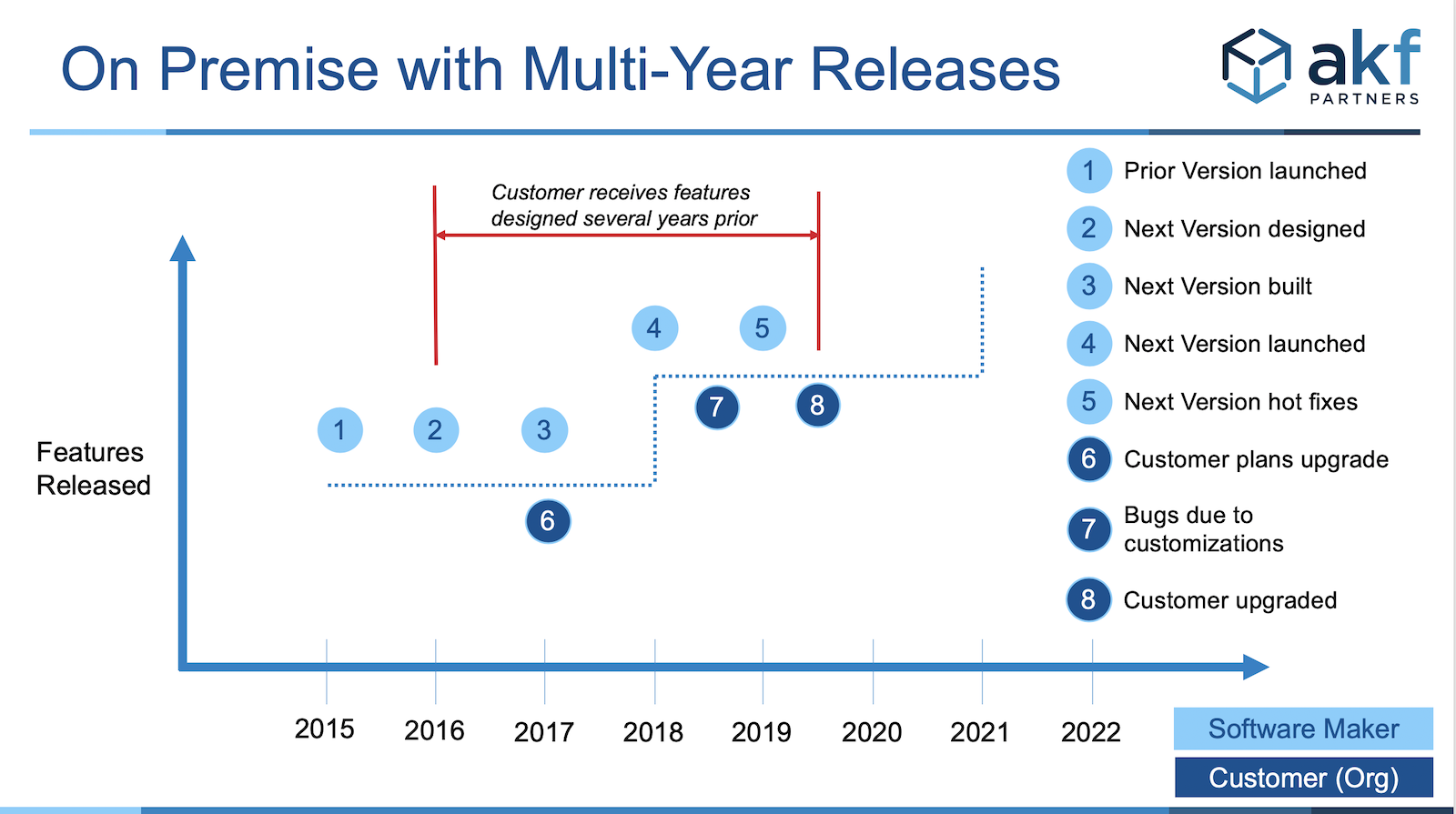
Now, let’s compare on-premises software to a cloud or Software as a Service (SaaS) provider. Many SaaS providers have the ability to launch and deliver features on a monthly or even weekly basis. They are able to do to this because the SaaS provider installs, configures, hosts, and maintains the software. This shift in responsibility and risk allows the SaaS provider to manage a handful of different configurations vs hundreds or thousands of variations.
The SaaS provider will almost always release more features faster than an on-premises vendor. The example below compares on-premises vendor with a 3 year release cycle to a SaaS provider with a 3 month release cycle. The SaaS provider is able to launch new features 12 times vs 1 time for the on-premises vendor. Many leading SaaS providers are able to release once or twice a month. That is 36 to 72 times the frequency of an on-premises software maker.
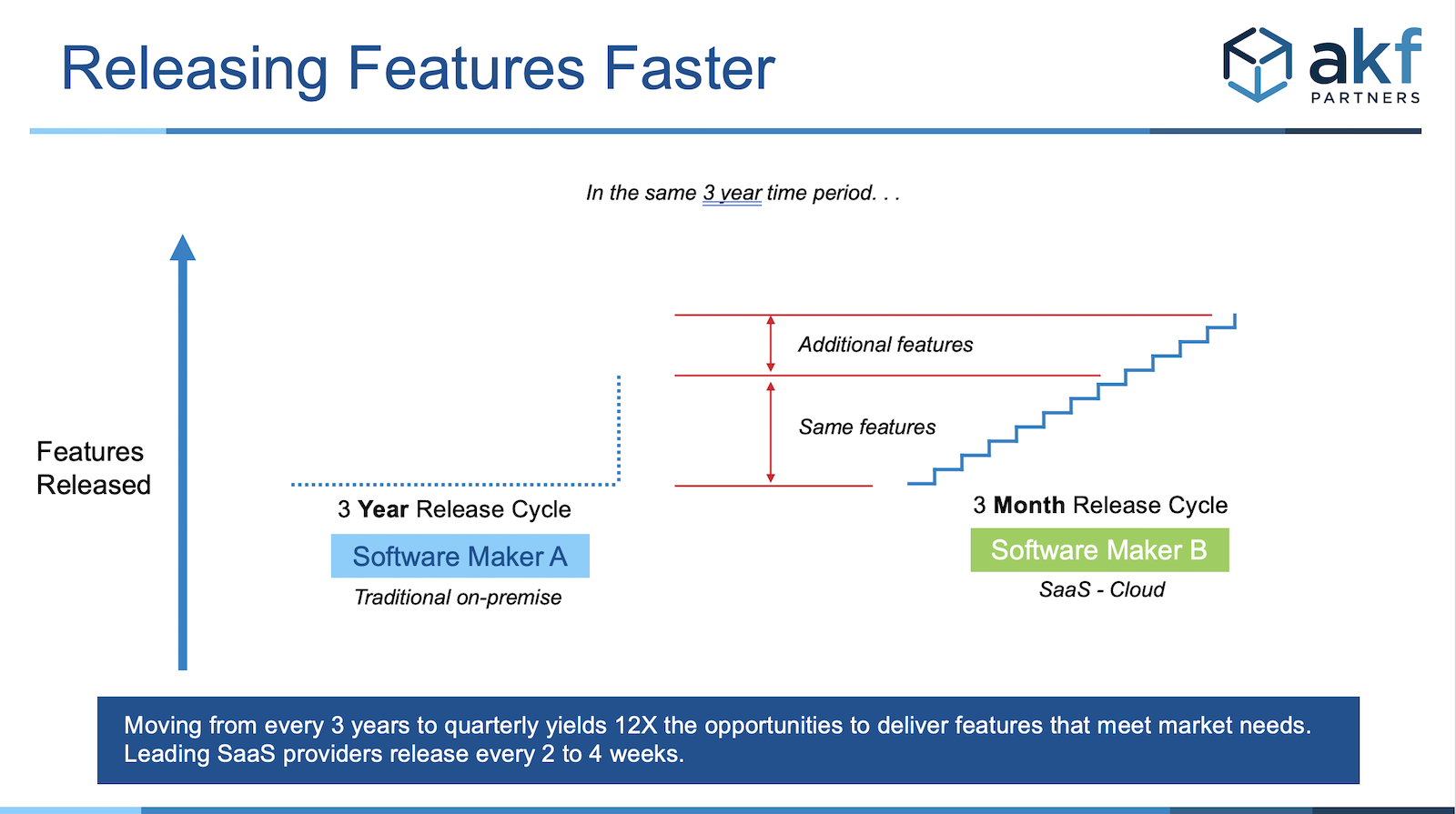
An on-premises market initially has more features than an emerging SaaS provider. However, the SaaS provider can overtake on-premises software maker in a few years. The SaaS provider is able to meet market demand due to smaller releases. The SaaS provider has a more favorable Cone of Uncertainty. The SaaS provider does by adopting Agile development methodologies and processes.

To learn more about Patterns and Anti-Patterns (what to do and what not do do) by shifting to Cloud, these AKF Growth Blog articles go into more depth:
- Migrating to the Cloud: Lift and Shift vs Cloud Native
- Transforming to SaaS is not Just a Technology Change
- The Many Unfortunate Meanings of Cloud
- Safely Paying Down Technical Debt for CIOs
We help SaaS first (also known as Cloud native) scale their software for rapid growth, help on-premises software companies move to the cloud, and help software buyers evaluate and move to newer SaaS or cloud solutions. If you need to help with your digital transformation, contact us at AFK Partners.